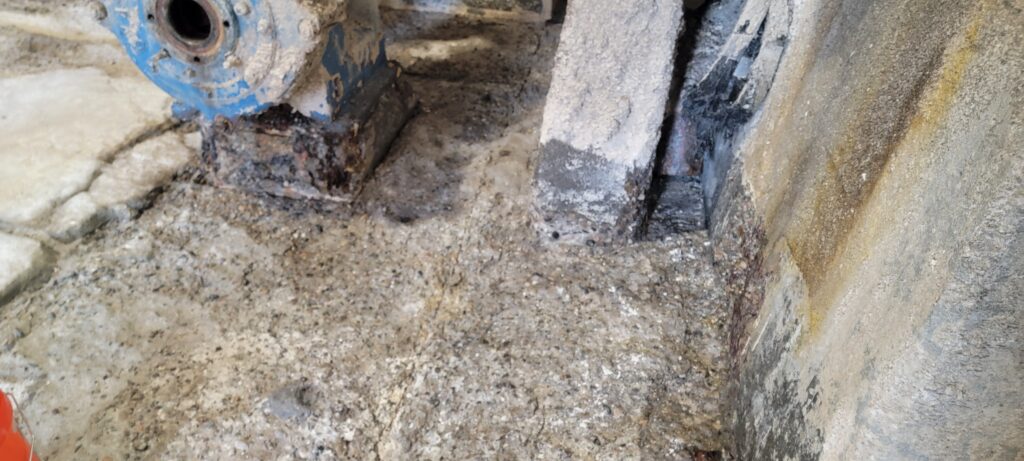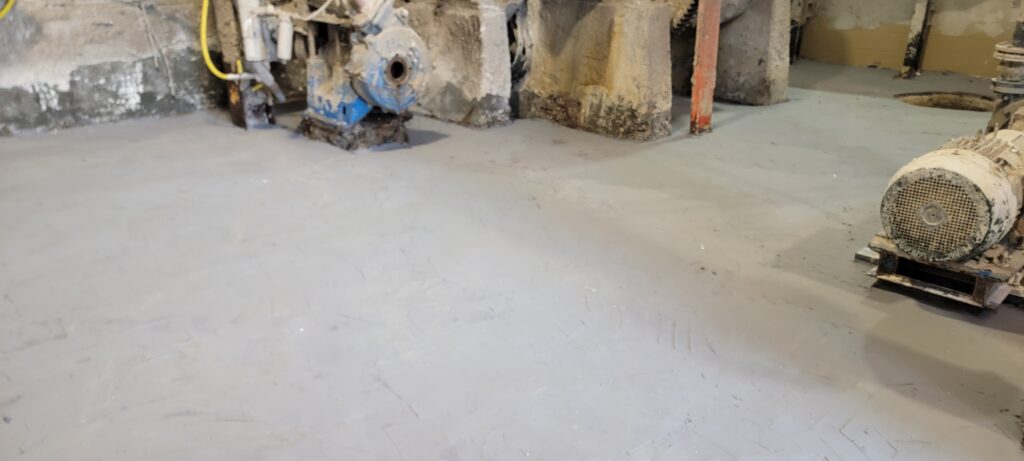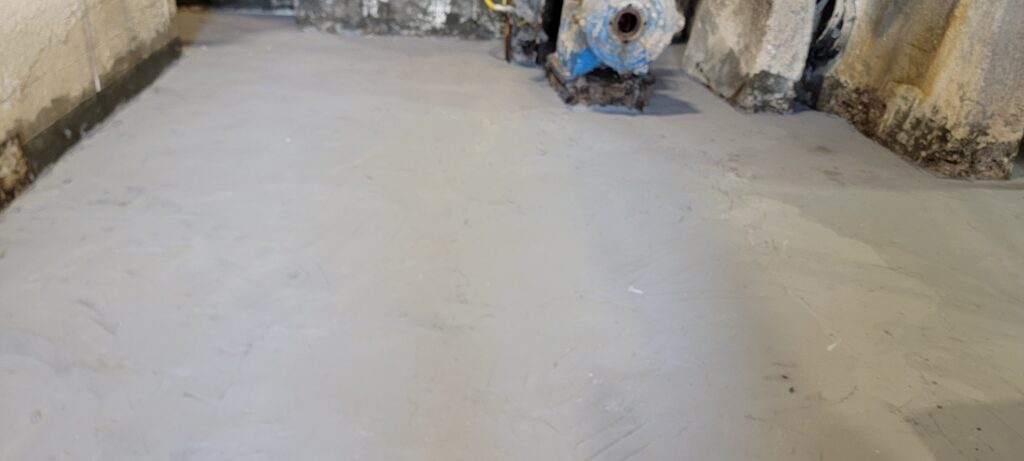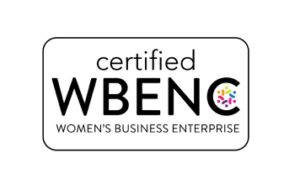Case Studies
For over 20 years, USI has provided protective coatings and corrosion prevention products proven to protect our nations most critical infrastructure and industrial machinery. Along the way we have documented many projects and pain points we have been able to help our partners repair, protect and upgrade.
Most Recent Articles
USI Flooring Systems
Common flooring concerns that we are working to address:
- Erosion damage
- Foot or hi-low traffic wear and tear
- Chemical exposure (Short or long term)
- Substrate condition & prep
- Access/Time for install
- Wet vs dry areas
- Regulations & safety
Cost of Waiting to get your floor fixed:
- Trip, slip & fall incidents = $20K-$50K each (Liberty Mutual Insurance Workplace Study)
- $11 billion annual cost nationwide
- Often cheap is expensive and expensive is cheap
- How much is workman’s comp or trip, slip and falls costing you and your company.
- Can your business afford even one OSHA reportable trip, slip and fall?
- Would you like to improve your company’s image?
Surface preparation is key. We carry a lot of flooring and repairing products:
- USI Crack Filler
- USI Epoxy Mortar Patch
- USI Machine Grout
- USI Coal Tar Patch
- USI Oil Stop Primer
- USI Quick Prime WB
- USI High Build HB
- USI Flexible Broadcast Primer
- USI Moisture Vapor Barrier
- USI Self-Leveling Epoxy
- USI Polyaspartic Urethane Sealer
- USI ECO Seal Urethane
- USI LVP – Quick Set High Build Epoxy
- USI Topcoat UV Stable Epoxy
- Paint Chips / Flakes
Why are USI Products different?
To select the proper coating and repair solution, you must ask the right questions. With USI you don’t just get the products, you get the expertise and technical know how on what products to use and how to apply them. We can go over the features and benefits of each and every product.
QUESTIONS:
- We have a lot of epoxy floors and have a lot of issues with them cracking. Looking for something that is durable and chemical resistant (2-13 chemical resistant range).
- What kind of maintenance does the floor need after it is installed?
You can always give us a call if you have any questions. office@usigroups.com
Ball Mill Room Concrete Floor Rebuild
The Problem
A magnesium plant in Northern Michigan received a report from KTA Engineering of Pittsburgh after an asset integrity inspection. The report recommended that the facility repair metal and concrete structures on the Ball Mill Room floor to prevent further deterioration and safety issues. KTA recommended three manufacturers for the repair products—one of which was Resimac.
The project required precise coordination and a rapid turnaround, as the repairs needed to be completed within a 72-hour window to avoid costly downtime.


The Solution
Unconventional Solutions, Inc. (USI) was chosen to supply the materials and provide on-site technical expertise. Two of USI’s certified AMPP Inspectors were present throughout the project to ensure surface preparation, mixing, and overcoat windows met all manufacturer standards.
The surface preparation began by chiseling and removing all loose concrete, followed by high-pressure water blasting to clean the area. Turbo heaters were used to accelerate the drying process to stay within the tight project timeline.
Once the surface was dry, the team applied Resichem 503 SPEP, a solvent-free epoxy primer designed for concrete. To bulk-fill the damaged area, contractors mixed 50 lbs. of clean, dry silica sand, 50 lbs. of irregular-shaped pea gravel, and 1 liter of Resichem 503 SPEP. This mixture was used to line and level the pit.
While the primer remained tacky, another crew followed behind, applying approximately ¼ inch of Resichem 576 Quartz Screed. Turbo heaters were again used to expedite curing.
By the next morning, the Ball Mill Room floor was fully cured, operational, and safe—eliminating trip, slip, and fall hazards while restoring structural integrity to the concrete.
Products Used

Chemical Resistant Coatings
Chemical Resistant Coatings with Chris Mathson and Wayne Jobling from Resimac.
Protective systems for the energy and Oil and gas sectors
Wayne and Chris are product and technical managers. The default coating that they usually talk about is 511 UCEN.
511 UCEN:
Suitable for permanent immersion; chemical storage, and secondary containment: chemical bunds
Key Properties:
- Brush and roller application
- Plural feed airless spray
- High build, 2-coat application
Chemical Resistance:
- Hydrochloric acid (HCI) up to 38% concentration
- Sulfuric acid (H₂SO₄) up to 98% Concentration
- Sodium hydroxide/Caustic (NaOH) up to 50% concentration
- Alcohols, amines, fuels and solvents
Ensuring the correct system is selected
Ask Key Questions:
- What is the issue I am trying to solve? What are the substrates I need to coat?
- Steel, concrete, GRP, etc., a mixture of substrates?
- Are there inherent structural issues that require resolving prior to coating?
What are my operating conditions?
- Chemicals and concentrations
- Operating temperatures and pressures
What are my constraints?
- Time limitations to carry out the work/return to service
- Weather issues, i.e., ambient temp, moisture
- Limited ability to correctly clean and prepare the area
- How long do I need it to last for?
Once we have the proper recommendation and specification, all items need to reviewed and talked about. All the different Resimac coatings have specification sheets for you to follow. There are a range of solutions. What is the problem, and what are you trying to fix? There are solutions.
When it comes to chemical resistance, the Resimac coatings can be applied to other areas that have a chemical exposure. (Short-term exposure)
Questions:
- What are some different factors that might change a surface preparation requirement?
- Can these coatings be spray applied, or are they all roller applied?





